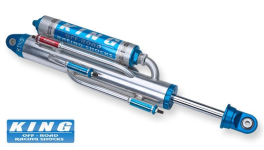Cookie
Well-known member
- May 5, 2021
- 1,981
- 2,293
Just a conversation and questions:
I run Triple Bypass Kings on my Funco gen 4, I always try to keep them at 150psi of Nitrogen, which I check every season.
My question, if you add 175psi, how does it change the performance? Not sure you can without doing damage to seals, but interested to know how this affects the shock's performance?
Another question, since I run airbags, would it change the performance to run Nitrogen instead of Air?
I run Triple Bypass Kings on my Funco gen 4, I always try to keep them at 150psi of Nitrogen, which I check every season.
My question, if you add 175psi, how does it change the performance? Not sure you can without doing damage to seals, but interested to know how this affects the shock's performance?
Another question, since I run airbags, would it change the performance to run Nitrogen instead of Air?


